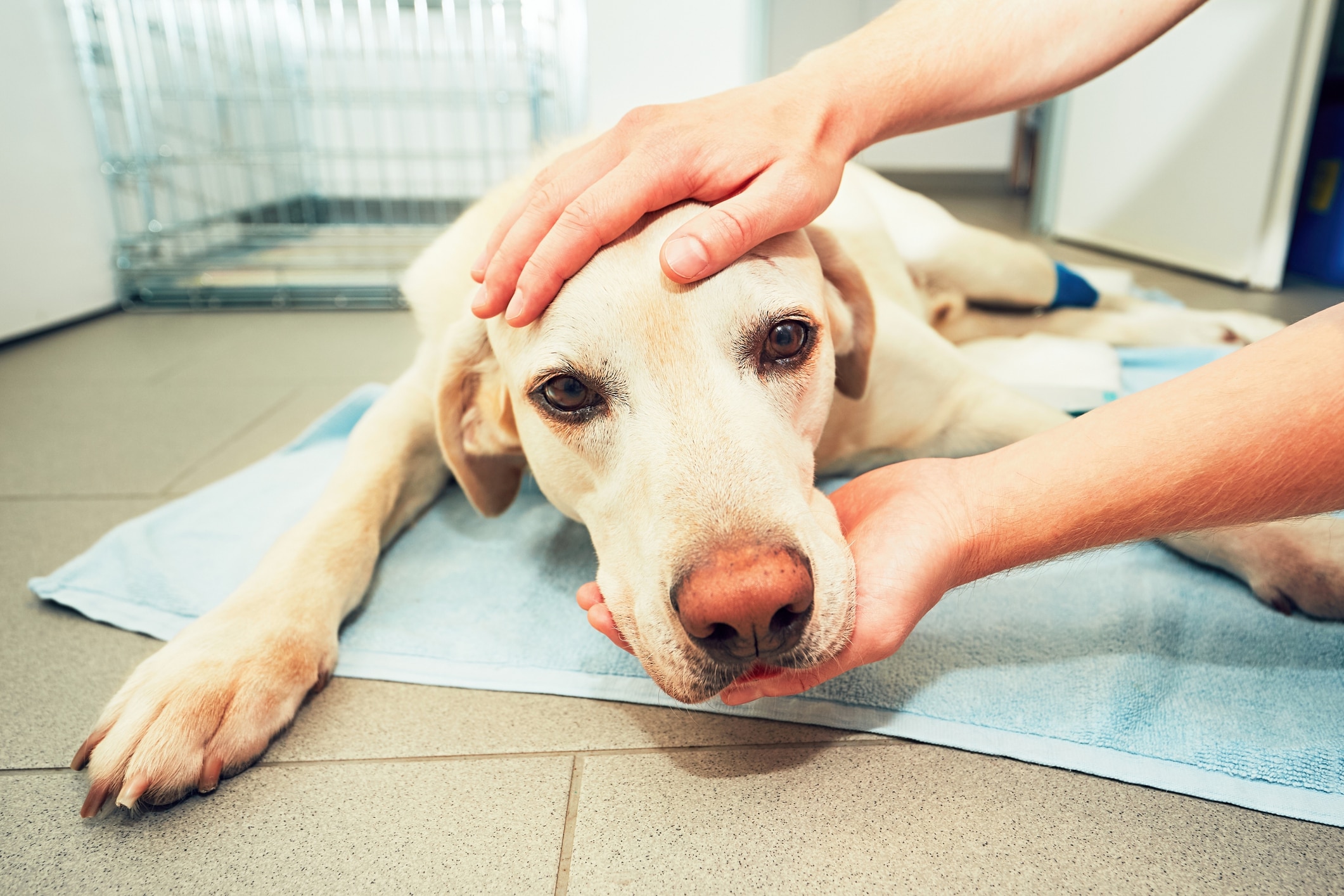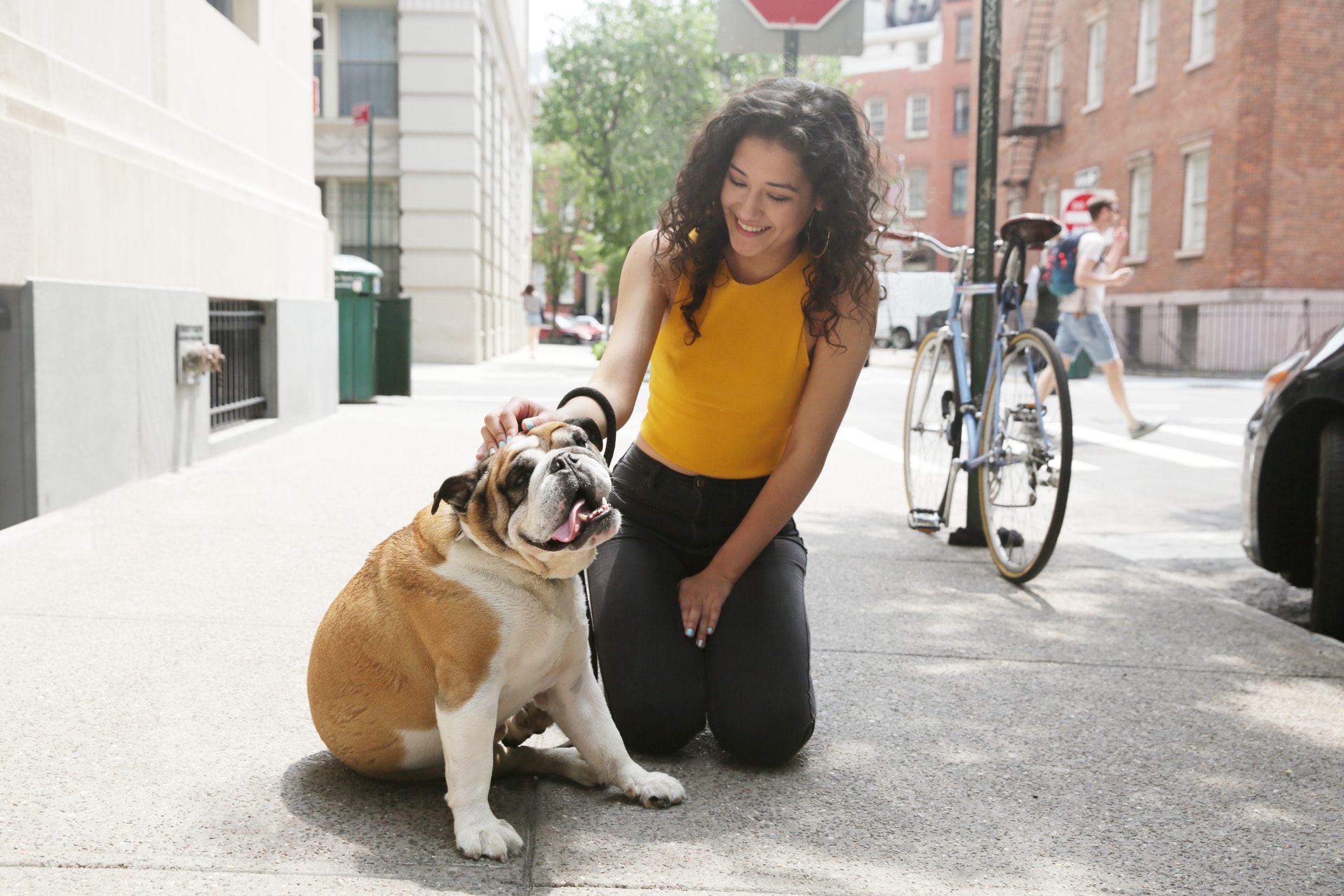In this article
Getting your new puppy or dog on a crate training schedule can help them adjust to their new surroundings and will give them a head start on learning the house rules right out of the gate. Using a crate helps limit unwanted behavior, such as a dog who starts to rip apart furniture because of separation anxiety or if you have a dog who eats everything they can get their mouth on. Crate training can also help you to house-train a new puppy so they’ll understand where they can go and — more importantly — where they can’t go to the bathroom.
Keep reading to learn the key benefits of crate training — plus tips and easy-to-follow schedules to make the process smoother.
Key takeaways
- Crate training early helps prevent bad habits and supports house training.
- Introducing the crate gradually with treats, toys and verbal cues encourages your dog to see it as a positive space.
- Follow age-based crate time limits to keep your dog comfortable and safe and to support their physical and emotional needs.
- A consistent weekday and weekend crate schedule can make training smoother for both you and your dog.
What are the benefits of crate training?
The key benefit of crate training early, according to veterinarian Dr. Melissa Webster, owner of Tampa Veterinary Hospital in Tampa, Florida, is helping to shape behavior before bad habits begin. “When you’re starting with a puppy, you can control destructive behavior,” says Webster.
 5 tips for crate training a dog
5 tips for crate training a dog

1. Introduce dogs to their crate slowly
In addition to introducing the crate early, Webster cautions that how you introduce the crate matters just as much as when. She explains, “Don’t just put a dog in the crate and walk out of the house. Use positive reinforcement with treats and encourage him with his favorite toy.”
2. Choose a right-sized crate for the dog
Webster also stresses making sure to get the right-sized crate. Many people mistakenly purchase a crate that’s too small for their dog, she notes. Use a crate that allows the dog to stand up and stretch out without pressing up against the sides or top.
3. Feed all meals and treats inside the crate
Encourage your dog to want to go into the crate by feeding all of their treats and meals inside it. When your dog stands outside the crate, simply toss in a handful of dry food. They will automatically climb into the crate to eat the food.
4. Create a verbal cue
Once your dog begins to enjoy the crate, select a word that will help your dog identify when to go into the crate. For example, if you select the word “crate,” put in the treat and call “crate” as your dog steps in. Once your dog is inside, give them the treat.
5. Make a crate training schedule
Decide how and when you want to use the crate and devise a training schedule. For example, if you’re housebreaking a puppy, your pup will stay in the crate until you let them out to use the bathroom. According to the American Kennel Club (AKC), the best way to housebreak a puppy is to get them on a schedule right away.
Read more:
What is the maximum crate time for a dog by age?
Before you make your crate training schedule, here’s a helpful breakdown to help determine generally how long you can safely crate a dog at different developmental stages:
Crate time limits by dog’s age
| Dog’s age | Max crate time (daytime) | Max crate time (nighttime) |
|---|---|---|
| 12-16 weeks | Up to 2 hours | Up to 6 hours |
| 4-5 months | Up to 3 hours | Up to 8 hours |
| 6-7 months | Up to 4 hours | Up to 8 hours |
| 8-11 months | Up to 6 hours | Up to 8 hours |
| 12 months and older | Up to 8 hours | Up to 10 hours |
Crate training schedule samples
Keeping these safe time limits in mind, how often you use the crate will depend on your lifestyle. For example, a weekday crate scheduling might revolve around work or school hours while the weekend schedule could offer more flexibility. If you have a full-time job that takes you away from the home throughout the day, attempting to crate train a smaller puppy that requires more frequent potty breaks may present a challenge. In the early months, consider hiring a trusted dog sitter or dog walker to help get your pup on a schedule. Then you can still work on crate training a puppy on weekends when you can spend more time at home.
Here are examples of weekday and weekend training schedules that you can adjust to suit your workday and lifestyle:
Crate training schedules for a 12–16-week-old puppy
Recommended crate time: Up to 2 hours during the day, 6 hours at night
Schedule 1: Work-from-home setup
| Time | Activity |
|---|---|
| 7 a.m. | Wake up, potty break, breakfast |
| 7:30–8:30 a.m. | Playtime, short training, supervised time |
| 8:30–10:30 a.m. | Crate time (first nap) |
| 10:30 a.m. | Potty break, short walk |
| 11–12 p.m. | Playtime and training |
| 12–2 p.m. | Crate time (second nap) |
| 2 p.m. | Potty break, lunch or snack (if needed) |
| 2:30–4 p.m. | Supervised play and cuddle time |
| 4–5:30 p.m. | Crate time (short wind-down) |
| 5:30 p.m. | Potty break, dinner |
| 6–8 p.m. | Family time, low-key play, brief training |
| 8–9:30 p.m. | Potty break, wind-down, bedtime crate entry |
| 9:30 p.m.–3:30 a.m. | Crated overnight (expect potty break) |
| 3:30–6 a.m. | Back in crate after short potty break |
Schedule 2: Half-day away (Pet parent works mornings)
| Time | Activity |
|---|---|
| 6:30 a.m. | Wake, potty break, breakfast |
| 7–7:30 a.m. | Play, short training |
| 7:30–9:30 a.m. | Crate time while owner is out |
| 9:30 a.m. | Potty break, short walk |
| 10–11:30 a.m. | Play, training, chew toy time |
| 11:30–1:30 p.m. | Crate time (afternoon nap) |
| 1:30 p.m. | Potty break, snack |
| 2–4 p.m. | Play, cuddle, supervised time |
| 4–5 p.m. | Short crate rest (optional) |
| 5–7:30 p.m. | Dinner, family time, light activity |
| 8 p.m. | Potty, bedtime routine |
| 8:30 p.m.–2:30 a.m. | Overnight crate time |
| 2:30–6:30 a.m. | Return to crate after potty break |
Crate training schedules for a 6–7-month-old dog
Recommended crate time: Up to 4 hours during the day, 8 hours at night
Schedule 1: Full workday crating with breaks
| Time | Activity |
|---|---|
| 6:30 a.m. | Wake, potty, breakfast |
| 7–8 a.m. | Walk, training, enrichment time |
| 8 a.m.–12 p.m. | Crate time while owner works |
| 12 p.m. | Potty break, short walk, lunch (if needed) |
| 12:30–2:30 p.m. | Supervised downtime/playtime |
| 2:30–4:30 p.m. | Crate time (second rest period) |
| 4:30 p.m. | Potty break, walk or play |
| 5:30 p.m. | Dinner |
| 6–8:30 p.m. | Family time, enrichment, light activity |
| 9 p.m. | Potty and bedtime |
| 9:30 PM–5:30 a.m. | Crated overnight |
Schedule 2: Flexible/hybrid day
| Time | Activity |
|---|---|
| 7 a.m. | Wake, potty, breakfast |
| 7:30–9 a.m. | Supervised play and training |
| 9–11 a.m. | Crate time (morning nap) |
| 11 a.m. | Potty, chew toy or puzzle feeder |
| 12–2 p.m. | Light activity or short walk |
| 2–4 p.m. | Crate time (afternoon rest) |
| 4–5:30 p.m. | Potty break, play, cuddle time |
| 5:30 p.m. | Dinner |
| 6–8:30 p.m. | Family time, calm enrichment (lick mat, etc.) |
| 9 p.m. | Final potty break, crate entry |
| 9:30 p.m.–5:30 a.m. | Crated overnight |
Weekend crate training schedule
| Day | Activity | Purpose |
|---|---|---|
| Friday | • Leave crate door open while home • Toss treats into crate randomly • Reward dog for going near crate on their own • Feed dinner in crate | Build positive, low-pressure crate exposure |
| Saturday | • Introduce verbal crate cue (e.g., “crate”) • Say cue + toss treat in crate 10 times per session, then take a break • Repeat 3 sessions/day | Teach crate command through repetition |
| Sunday | • Use crate cue and crate dog for at least 30 minutes • Put a chew toy or bone inside the crate to occupy them • After 30 minutes, let them out but don’t reward them with any treats • Gradually increase to age-appropriate time limits (see above) | Begin building crate duration & independence |
Once your dog gets used to being on a crate training schedule, they will not only get in the crate when you leave the house or serve dinner, they will actually get excited to use it.





